The Australian dollar was firm again last night as DXY came off hard and EUR rallied:
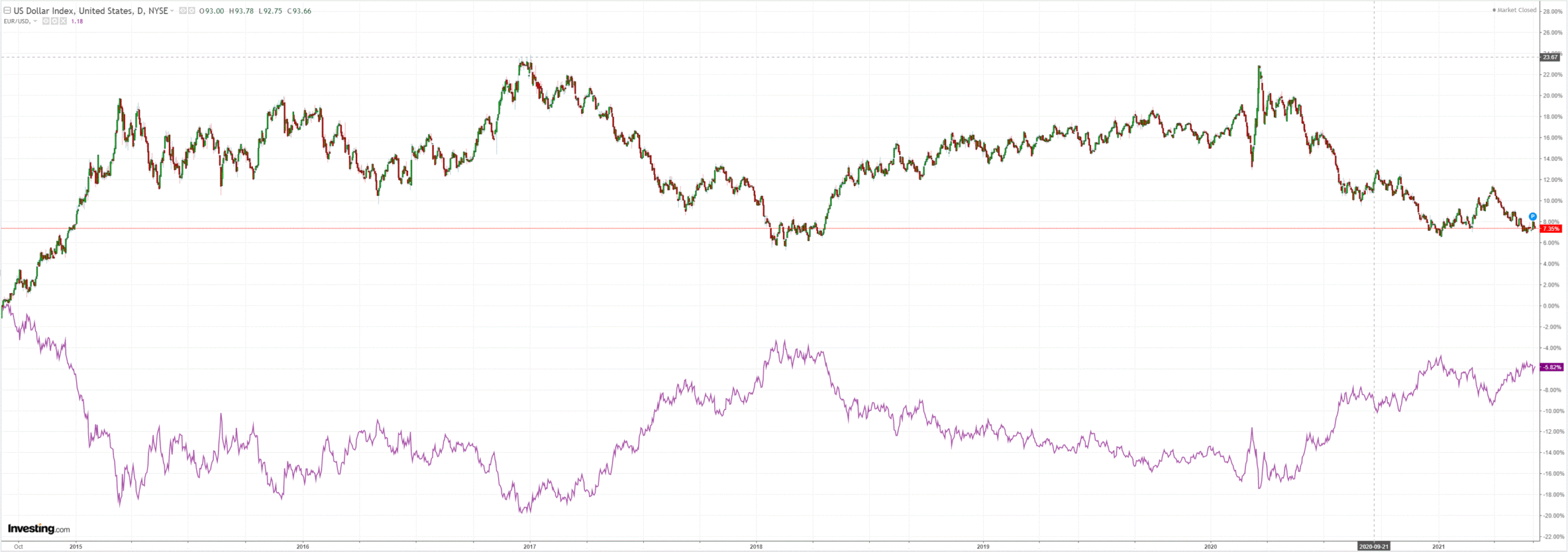
AUD was firm on the crosses:
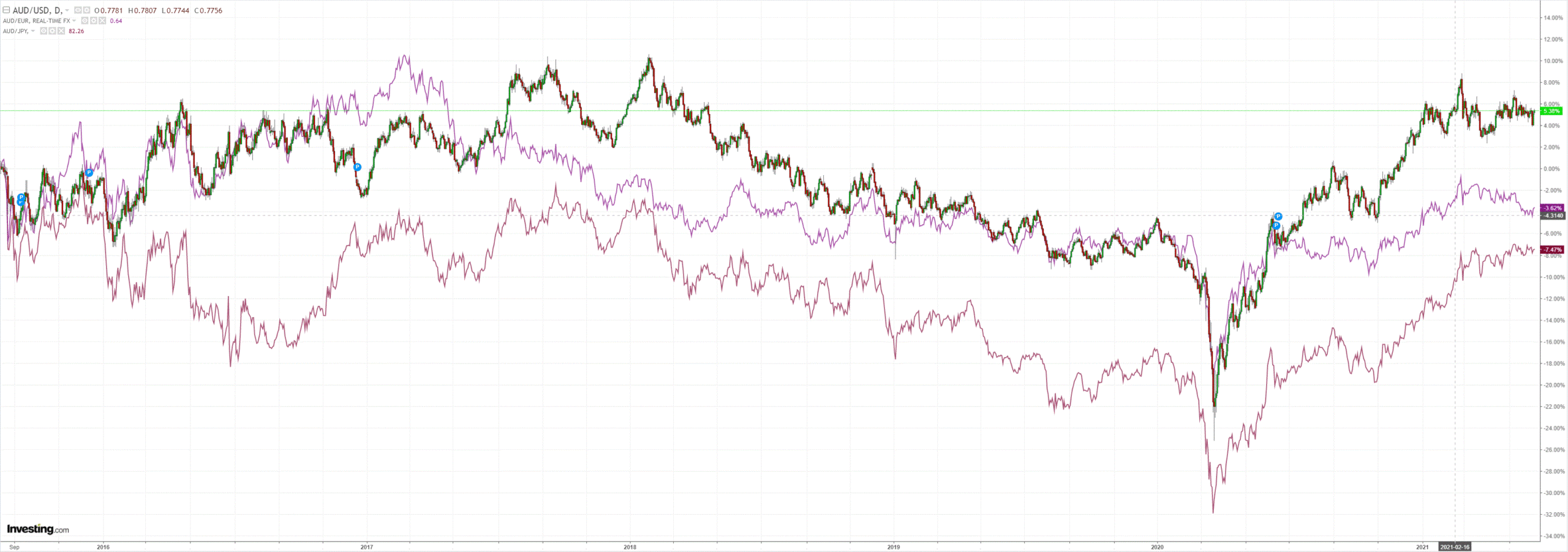
Oil fell, gold lifted:
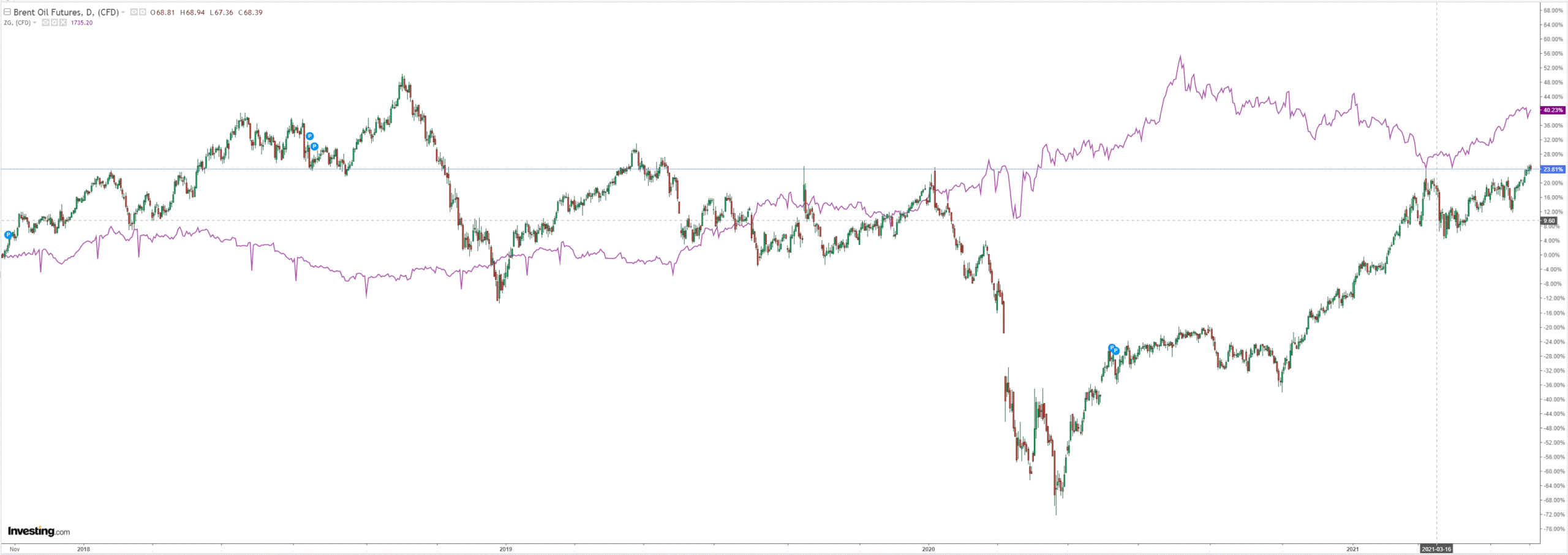
Metals were subdued:
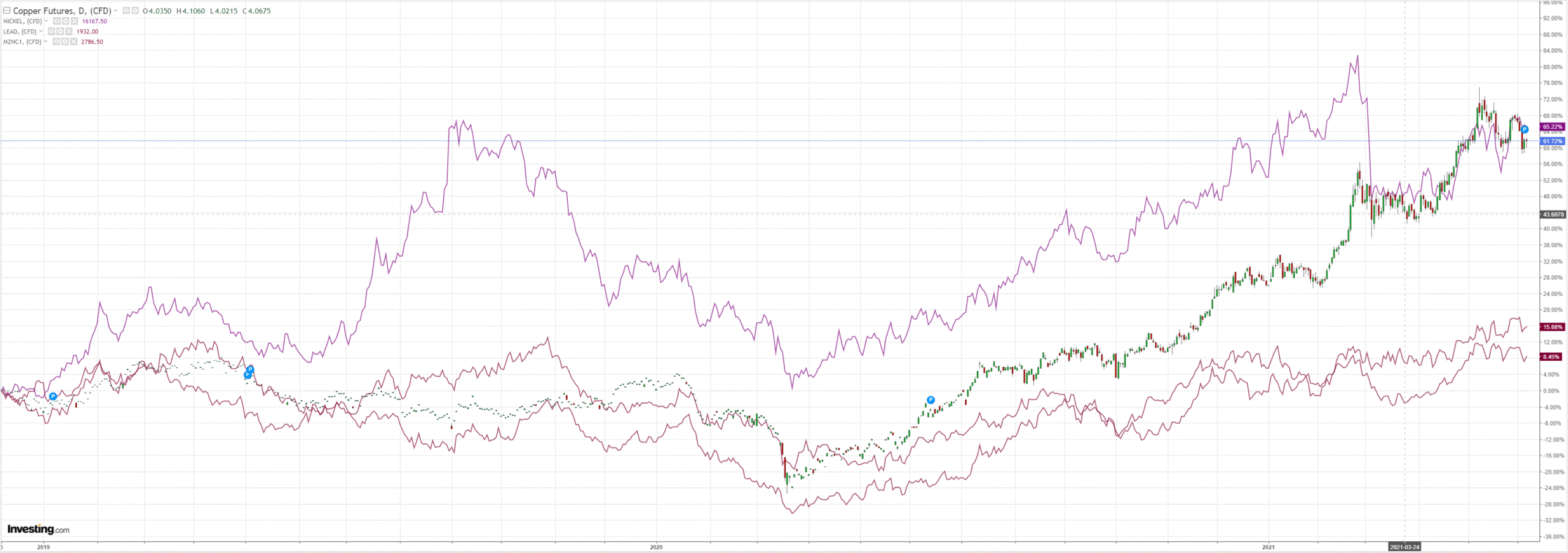
EM stocks marked time:
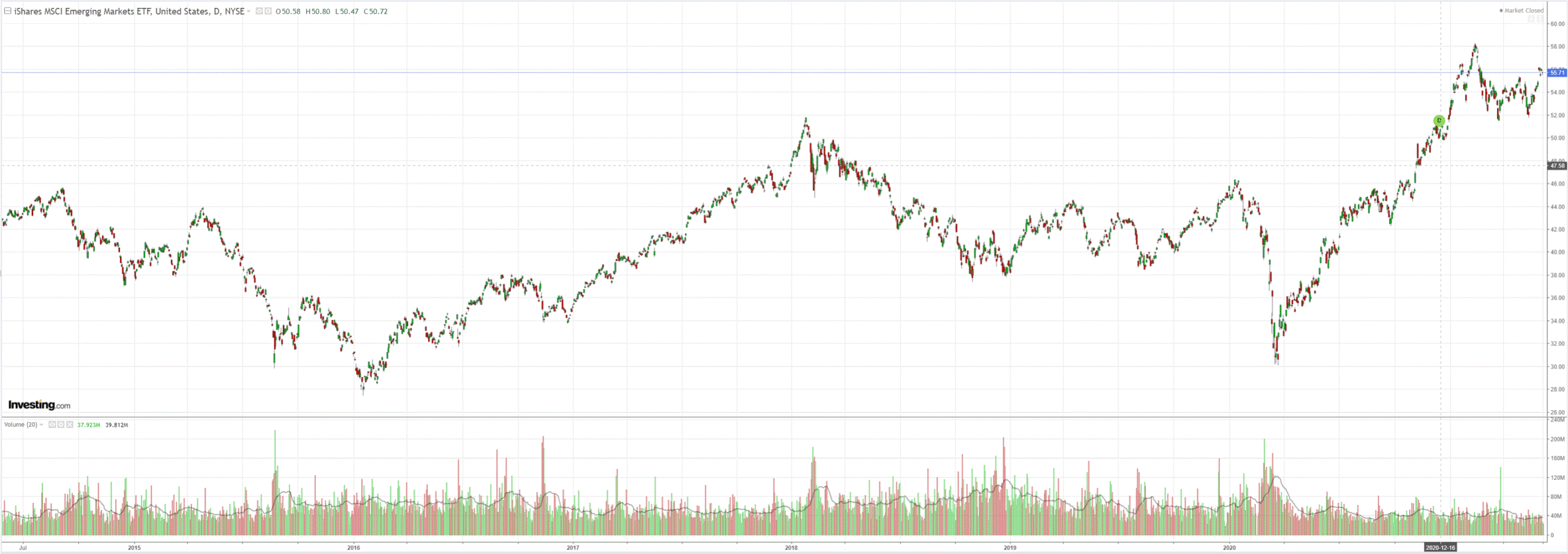
Junk is fine!
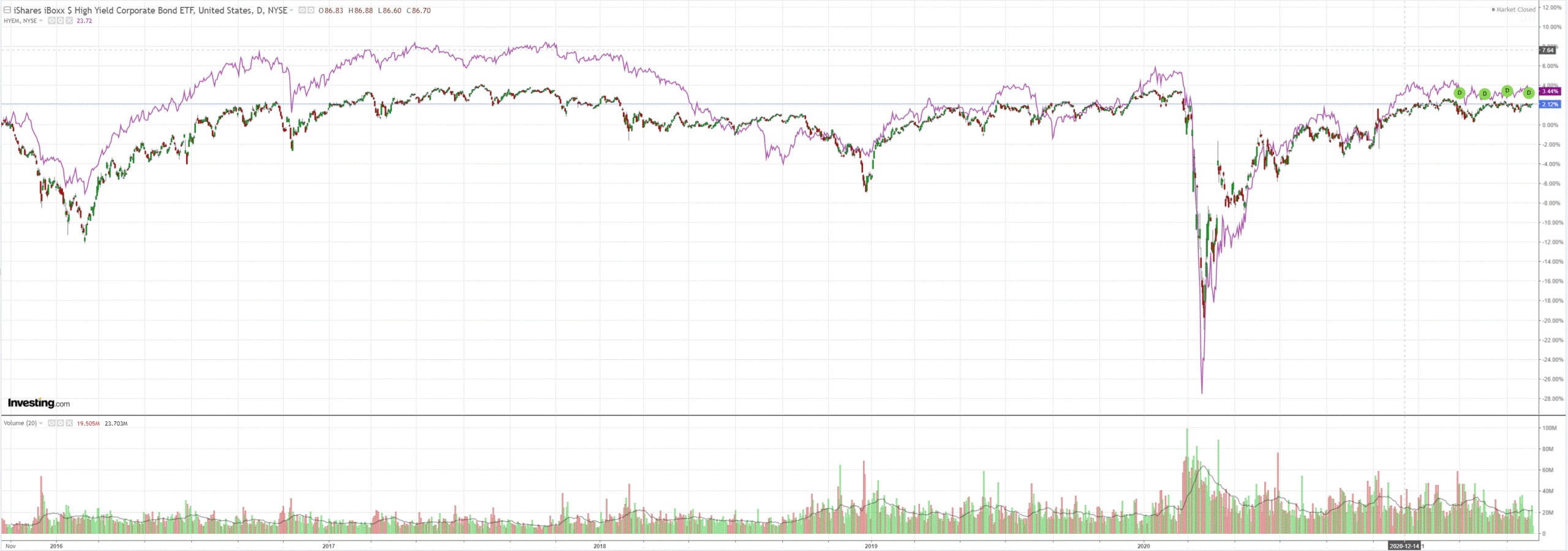
US yields firmed a bit:
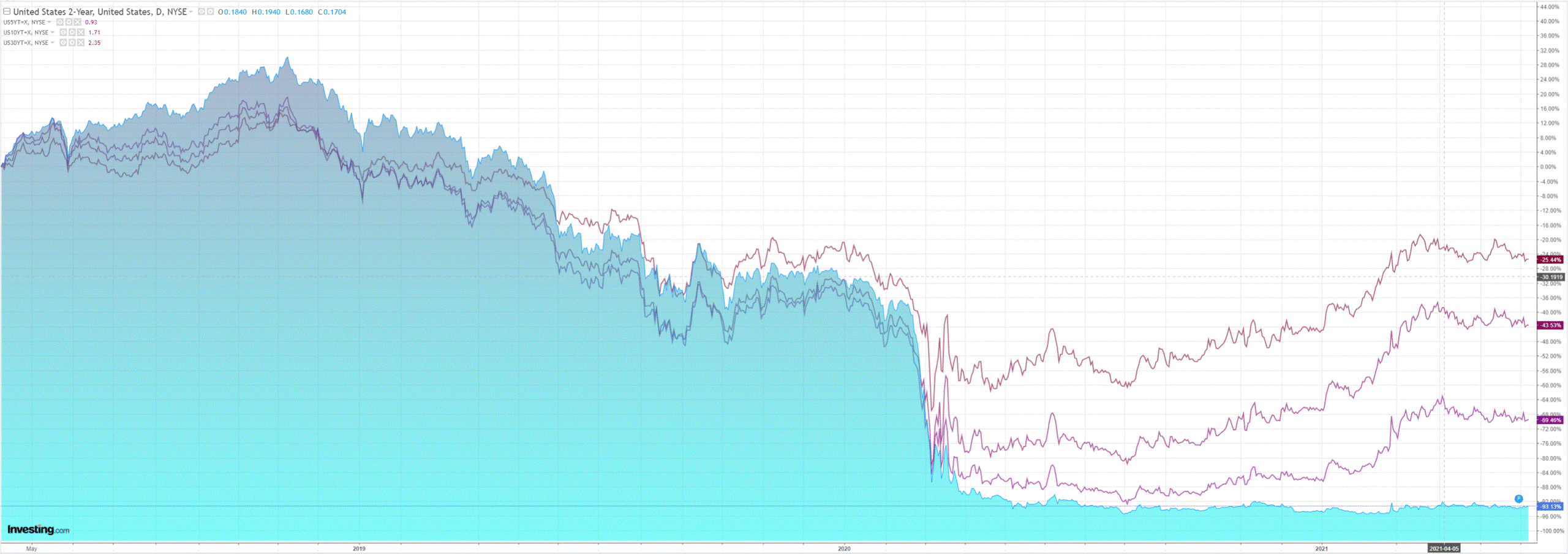
But the great inflation trade is looking weary as tech shapes up for another breakout:
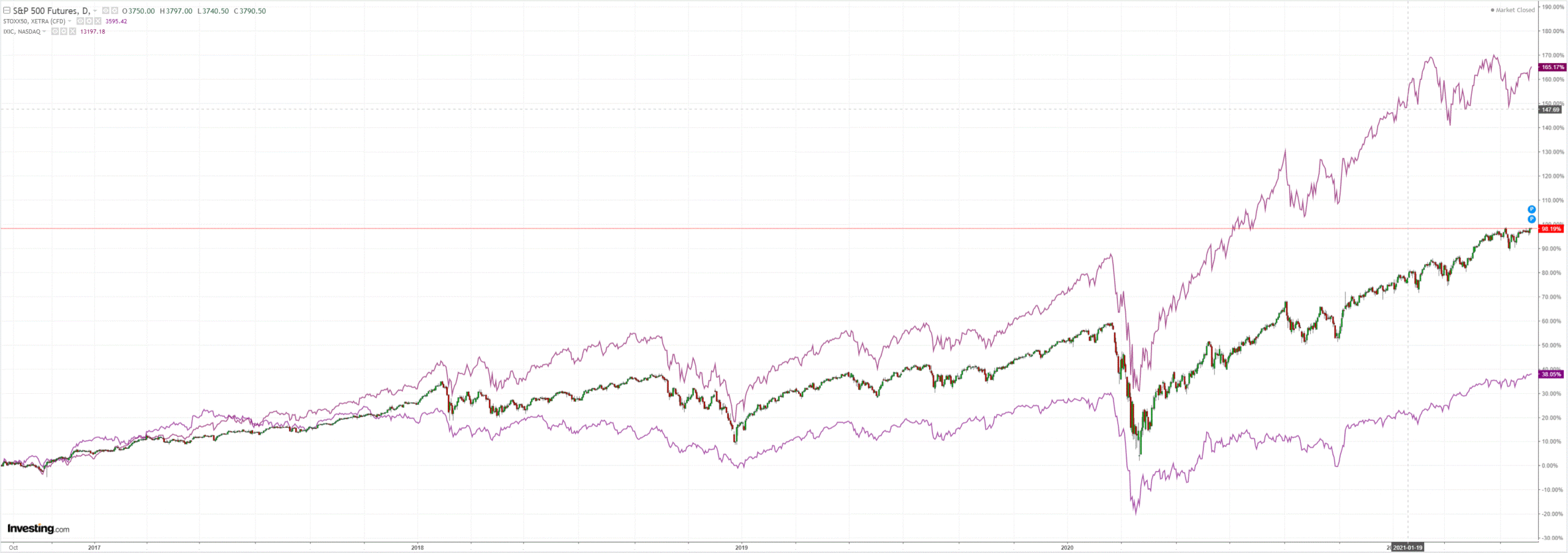
Westpac has the wrap:
Event Wrap
German factory orders fell 0.2%m/m in April, disappointing expectations of +0.5%, although March was revised higher to +3.9% from +3.0%. The slight pullback in April does not change the overall picture of a very strong German manufacturing sector.
Eurozone Sentix investor confidence survey rose to 28.1 (vs. est. 25.4, prior 21.0), taking the index close to highs seen in early-2018.
Event Outlook
Australia: The NAB business survey has jumped 14pts to 32 over the past 2 months, raising the possibility of a pullback in the upcoming May update.
Euro Area: The market is looking for no revisions in the final print of Q1 GDP, -0.6%qtr. The June ZEW survey of expectations should continue to look through to the economic rebound in H2.
US: Confidence will be running high in the May NFIB small business optimism index (market f/c: 100.9). Strong consumer demand, and resultant strength in imports, is likely to be at play in the April trade balance (market f/c: -68.5bn). April JOLTS job openings will be in focus, given the attention on hiring rates and vacancies.
Goldman has a take on where we are at:
The US economy added 559k jobs in May and the U3 unemployment rate edged down to a recovery low of 5.8%. But the latest employment report missed market expectations (which were elevated after the earlier ADP result), and di d little to dispel concerns that supply frictions are holding back the labor market recovery. Indeed, the US labor force participation rate declined slightly during the month, and the employment-to-population ratio increased by just one tenth. We expect that the report will ease market concerns about an earlier-than-expected wind down of the Fed’s asset purchases, even if it does not entirely eliminate the possibility of a September taper announcement. The combination of steady Fed expectations and a broadening global economic recovery should allow recent Dollar weakness continue. Our preferred expression remains long EUR/USD, with a target of 1.25. Rebounding economic activity and equity inflows have provided a tailwind to the single currency; issuance of Recovery Fund bonds, which is set to begin soon, could also result in official demand for EUR. This week’s ECB meeting will be the next major risk event;o our economists expect the governing council to retailn language indicating a “significantly higher” pace of asset purchases compared to early in the year. Besides the Euro, a more benign US real rate backdrop should be supportive of a variety of EM crosses as well…EM currencies should benefit over the coming months from cheap valuations, are build of carry from central bank rate hikes, and the vaccine-led cyclical reopening.
That is probably the base case for the time being. The big falls ahead in iron ore and commodity prices as China slows can be mitigated for a short while by ongoing DXY weakness owing to better European data.
Let’s not forget that AUD has sensibly and hugely underperformed Goldman’s iron ore and commodities bubble, so we can expect the reverse for a while as iron ore et al deflates right alongside US inflation and Fed tightening expectations.
In the short term, the problem will come for markets if the Chinese slowdown converges with the US fiscal cliff in a growth shock that pushes DXY higher.
If we get through that unscathed then, in the slightly less short term, the ongoing commodities bust and repair of US labour markets in 2022 will begin to lift DXY anyway as AUD is killed by the death of one thousand commodity cuts.
In short, I will still use any AUD strength to push more aggressively offshore.

